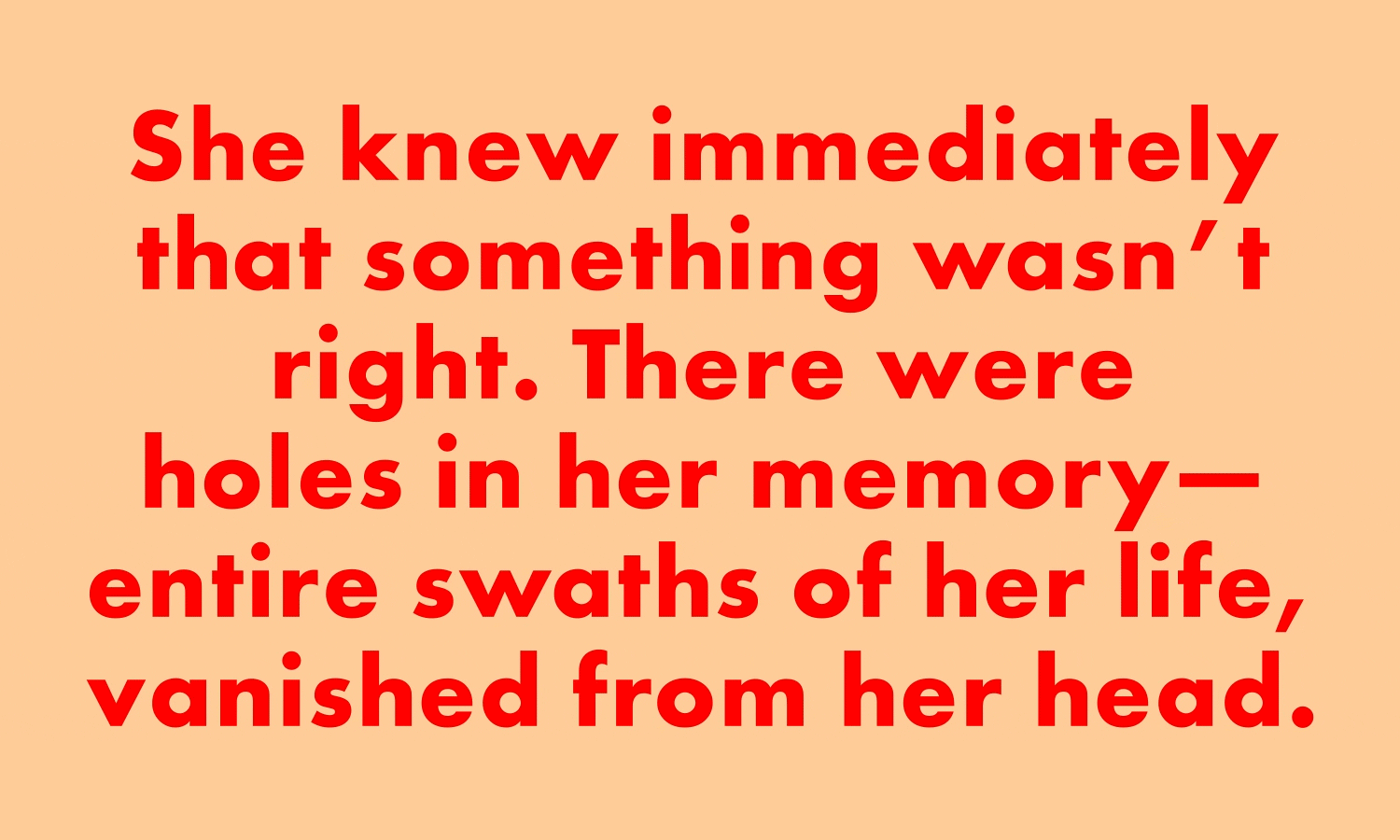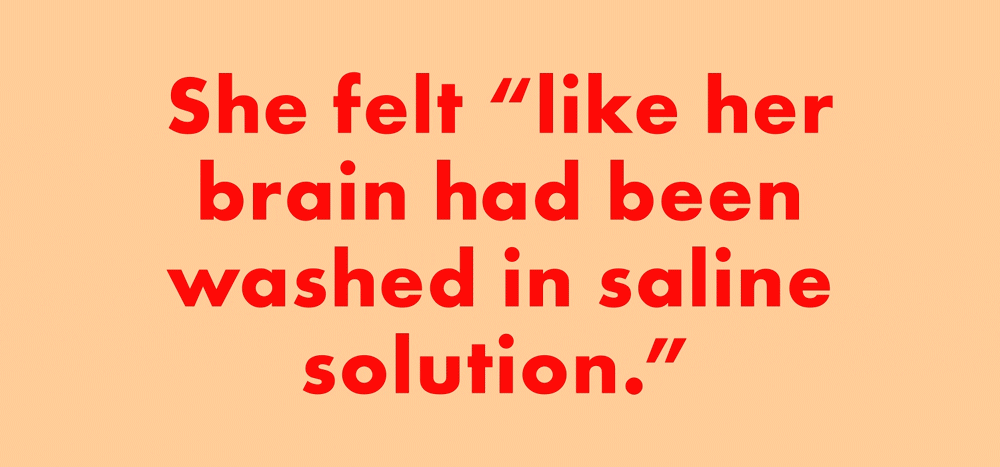9 Rounds of Electroshock Therapy. 6 Years Lost. All Because Her Doctors Got It Horribly Wrong.
This is what happens when medical professionals don't believe women.
She’s lying on a gurney in a white room, a blanket covering her body, an IV pinched into her arm. A nurse is sticking electrodes to the side of her head, like stickers. Soon they’ll send electric currents into her brain, inducing a seizure.
She’s aware that she’s been in this hospital before. Twenty-four years ago, she was born here.
Now she’s undergoing electroconvulsive therapy (ECT), a sort of last-ditch treatment for severe depression and other psychiatric issues that will attempt to shock her out of years of intractable symptoms.
She lies on the gurney. The anesthesiologist is here now, the drugs flowing into her veins. Her last thought before the room goes black is that this won’t work—she knows it won’t. Because she’s not depressed.
When Courtney was a senior in high school, she got sick with something like the flu—but her symptoms never left. An avid rock climber, she was suddenly exhausted after walking up one flight of stairs. She’d get dizzy when she stood up. She had bouts of sore throats and fevers.
A straight-A student who was on track to graduate valedictorian of her class, she also started having out-of-the-ordinary academic struggles. For the first time ever, she couldn’t fully focus or comprehend what was happening in school—it was like a fog had settled over her brain. Her math teacher even poked fun at her in front of the other students. He assumed she was just slacking off, since she'd already been accepted to Brown.
When her symptoms didn’t go away after a few weeks, Courtney figured she had mono. She doesn’t remember if a doctor ever explicitly tested her for it. But what else could it mean that she was now capable of sleeping for 18 hours straight? She missed days and days of school. Some classmates started a rumor that she was making it all up. She was too tired to care.
Once Courtney was committed to the hospital, her struggle to get taken seriously continued. "I know at that point, I was still definitely saying, 'This isn't right, there's something else going on here,'" she says. "Why can't I think clearly?"
“Nobody was listening to me,” she recalls. “I had all of these symptoms that had nothing to do with mental illness, which is not to denigrate the severity of mental illness. But I'd say to doctors, You're diagnosing me with being depressed, but that's not what it is. I had a desire to do things, but I couldn't. That's different than having no desire to interact with the world." She would repeat her symptoms over and over—heart palpitations, fevers, aches.
For years, doctors had turned up no tumor swallowing her brain or breast, no mysterious lump or bump to investigate. She had been tested for a thyroid condition (nope). One psychologist said she must have suffered trauma as a child (also nope).
She recorded her frustration in her journals from the time, which she shared with Cosmopolitan. "This is a whirlwind," she wrote. "Each doctor is giving me a diagnosis and it's adding up to nothing...Dr. G was harsh yesterday...He offered antidepressants and said that if I refused them, there was nothing they could do for me."
Even her parents agreed with the doctors. If something were wrong, wouldn't it show up on a test, a scan, on something?
Waking up in the hospital after her first ECT treatment, Courtney felt "like her brain had been washed in saline solution." As the general anesthesia wore off, she knew immediately that something wasn't right. There were holes in her memory—entire swaths of her life, vanished from her head (memory loss is a common side effect of ECT). She knew where she was, recognized her parents. She could remember most things from her adolescence, before she got sick. Prom...she had gone to prom. But there were lots of blank spots. Her time at Brown, a haze.
Her vocabulary had also become strangely limited, even childlike. “I have a snapshot in my mind of me sitting at a computer, after ECT, trying to teach myself how to speak English,” Courtney says. “I was going to dictionary sites to relearn my vocabulary—words that I knew before.” In her journal, she wrote: “Words just aren’t coming fast enough to me. I lie in bed this morning rolling my mind over and over trying to get it to find the word 'voyeurism.' I tried everything.”
Her extreme fatigue, however, remained unchanged. And her fever kept spiking intermittently. Still, Courtney submitted to ECT eight more times in the ensuing weeks. This number of treatments is not unusual for patients who are severely depressed—but for Courtney, they didn’t help at all.
More than just ME/CFS, autoimmune diseases in general have been historically dismissed by doctors or categorized as psychological. Multiple sclerosis, for instance, was referred to as "hysterical paralysis." (It was only recognized as an autoimmune disorder in 1996 when MRI machines helped legitimize the disease.) Because women make up more than 75 percent of people who suffer from these conditions, some doctors blame medical sexism for the fact that we still know so little about them. In the 1970s, the FDA recommended that women of childbearing age be banned from medical research (in case they became pregnant during the course of the tests), creating a major information gap around the illnesses that predominantly affect women.
It took Courtney a minute to accept that she finally had an answer—that, after more than six years during which her life had derailed into a hell she didn’t recognize, she’d finally been vindicated: Something was physically wrong with her. She researched ME/CFS on her own before getting on board with the diagnosis. If she felt relief, she doesn't remember it.








